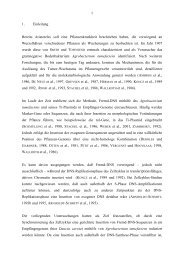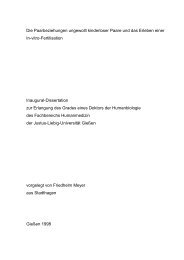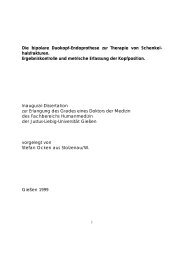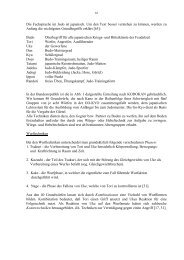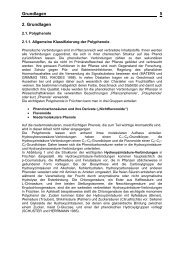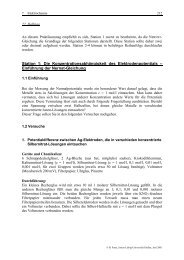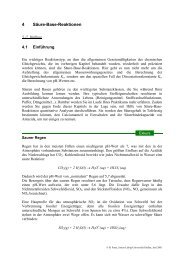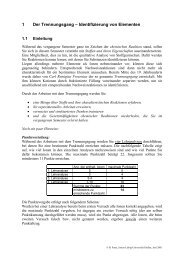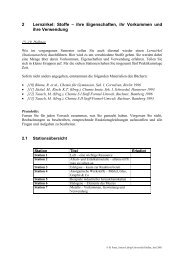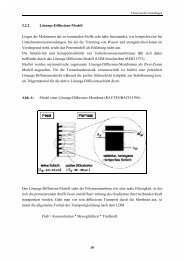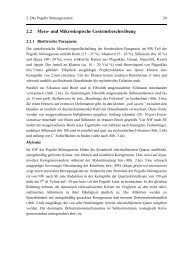Effects of diabaticity on fusion of heavy nuclei in the dinuclear model ...
Effects of diabaticity on fusion of heavy nuclei in the dinuclear model ...
Effects of diabaticity on fusion of heavy nuclei in the dinuclear model ...
Create successful ePaper yourself
Turn your PDF publications into a flip-book with our unique Google optimized e-Paper software.
violat<strong>in</strong>g parts SV from <strong>the</strong> total Hamilt<strong>on</strong>ian H <str<strong>on</strong>g>of</str<strong>on</strong>g> <strong>the</strong> TCSM. Then <strong>the</strong> diabatic states are <strong>the</strong><br />
eigenstates <str<strong>on</strong>g>of</str<strong>on</strong>g> <strong>the</strong> difference H d = H − SV , which is taken as <strong>the</strong> diabatic TCSM-Hamilt<strong>on</strong>ian<br />
<strong>in</strong> <strong>the</strong> case <str<strong>on</strong>g>of</str<strong>on</strong>g> equal <strong>nuclei</strong> (symmetric system). S<strong>in</strong>ce <strong>the</strong> symmetry <str<strong>on</strong>g>of</str<strong>on</strong>g> Hd is higher than<br />
that <str<strong>on</strong>g>of</str<strong>on</strong>g> H, <strong>the</strong> irreducible representati<strong>on</strong>s <str<strong>on</strong>g>of</str<strong>on</strong>g> <strong>the</strong> Hd symmetry group appear to be, generally<br />
speak<strong>in</strong>g, reducible representati<strong>on</strong>s <str<strong>on</strong>g>of</str<strong>on</strong>g> <strong>the</strong> H symmetry group. Thus two different irreducible<br />
representati<strong>on</strong>s <str<strong>on</strong>g>of</str<strong>on</strong>g> <strong>the</strong> Hd symmetry group can c<strong>on</strong>ta<strong>in</strong> <strong>the</strong> same irreducible representati<strong>on</strong>s <str<strong>on</strong>g>of</str<strong>on</strong>g><br />
<strong>the</strong> H symmetry group. Therefore, <strong>in</strong> <strong>the</strong> general case <strong>the</strong> Hd eigenvalues possess<strong>in</strong>g <strong>the</strong> same<br />
symmetry relative to <strong>the</strong> H symmetry group may cross. This cross<strong>in</strong>g will become an avoided<br />
cross<strong>in</strong>g if <strong>the</strong> perturbati<strong>on</strong> SV , which is n<strong>on</strong>diag<strong>on</strong>al <strong>in</strong> <strong>the</strong> quantum numbers specify<strong>in</strong>g <strong>the</strong><br />
Hd eigenvalues, is taken <strong>in</strong>to account. For slightly asymmetric systems, <strong>the</strong> diabatic states are<br />
def<strong>in</strong>ed by <strong>the</strong> expansi<strong>on</strong> <str<strong>on</strong>g>of</str<strong>on</strong>g> <strong>the</strong> asymptotic states <strong>in</strong> terms <str<strong>on</strong>g>of</str<strong>on</strong>g> such maximum symmetry states.<br />
Keep<strong>in</strong>g <strong>the</strong> expansi<strong>on</strong> coefficients fixed as functi<strong>on</strong>s <str<strong>on</strong>g>of</str<strong>on</strong>g> <strong>the</strong> collective coord<strong>in</strong>ate q, diabatic<br />
states are obta<strong>in</strong>ed with <strong>the</strong> desired property that <strong>the</strong>ir wave functi<strong>on</strong>s adjust to <strong>the</strong> shape <str<strong>on</strong>g>of</str<strong>on</strong>g><br />
<strong>the</strong> TCSM potential by a m<strong>in</strong>imum change <strong>in</strong> <strong>the</strong>ir structure. Diabatic levels obta<strong>in</strong>ed with<br />
this method agree with those from <strong>the</strong> maximum overlap procedure [57]. In <strong>the</strong> calculati<strong>on</strong>s we<br />
use <strong>the</strong> method <str<strong>on</strong>g>of</str<strong>on</strong>g> maximum symmetry because it turns out to be numerically easier to handle.<br />
23



